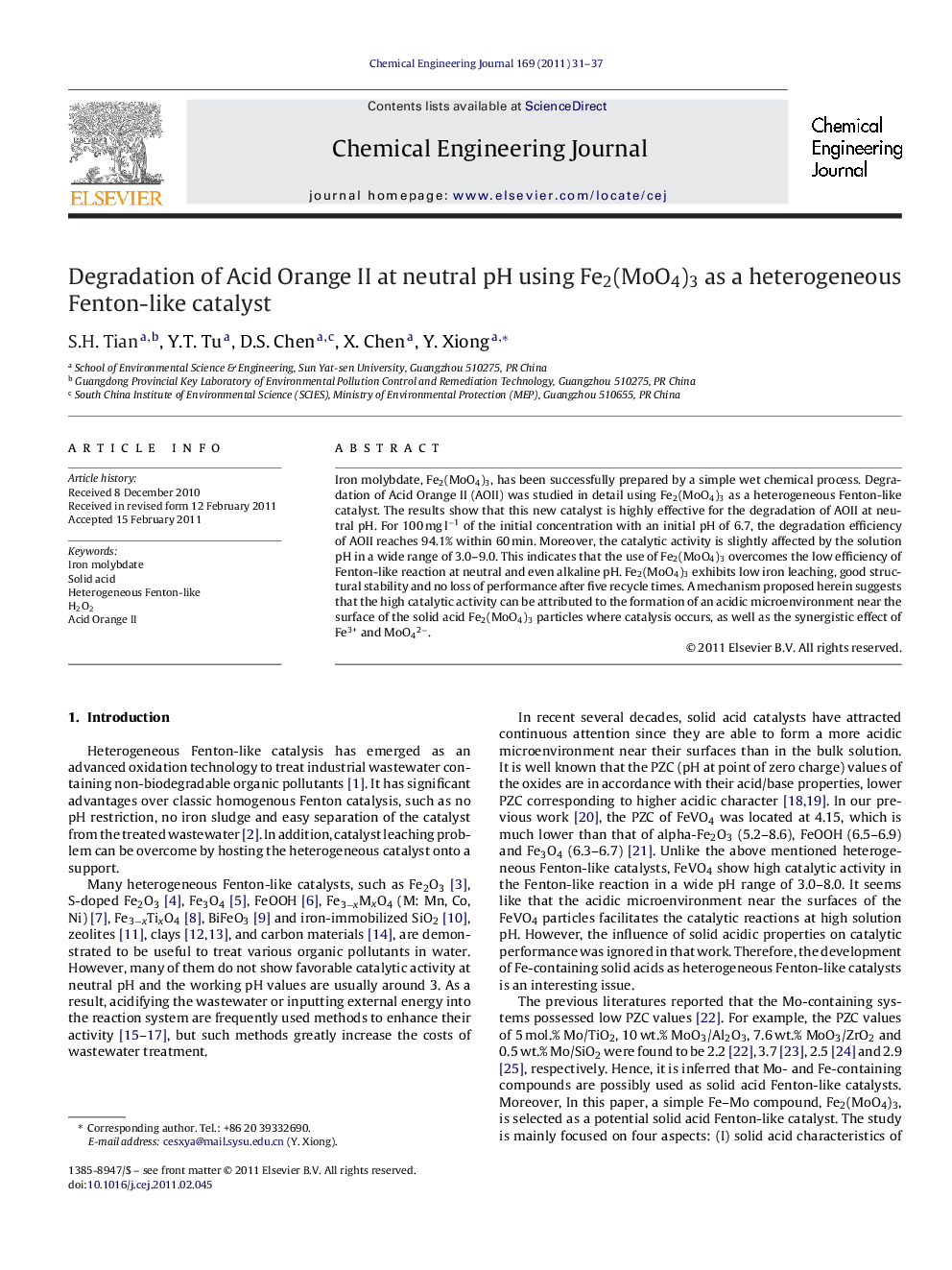| Article ID | Journal | Published Year | Pages | File Type |
|---|---|---|---|---|
| 151200 | Chemical Engineering Journal | 2011 | 7 Pages |
Iron molybdate, Fe2(MoO4)3, has been successfully prepared by a simple wet chemical process. Degradation of Acid Orange II (AOII) was studied in detail using Fe2(MoO4)3 as a heterogeneous Fenton-like catalyst. The results show that this new catalyst is highly effective for the degradation of AOII at neutral pH. For 100 mg l−1 of the initial concentration with an initial pH of 6.7, the degradation efficiency of AOII reaches 94.1% within 60 min. Moreover, the catalytic activity is slightly affected by the solution pH in a wide range of 3.0–9.0. This indicates that the use of Fe2(MoO4)3 overcomes the low efficiency of Fenton-like reaction at neutral and even alkaline pH. Fe2(MoO4)3 exhibits low iron leaching, good structural stability and no loss of performance after five recycle times. A mechanism proposed herein suggests that the high catalytic activity can be attributed to the formation of an acidic microenvironment near the surface of the solid acid Fe2(MoO4)3 particles where catalysis occurs, as well as the synergistic effect of Fe3+ and MoO42−.
